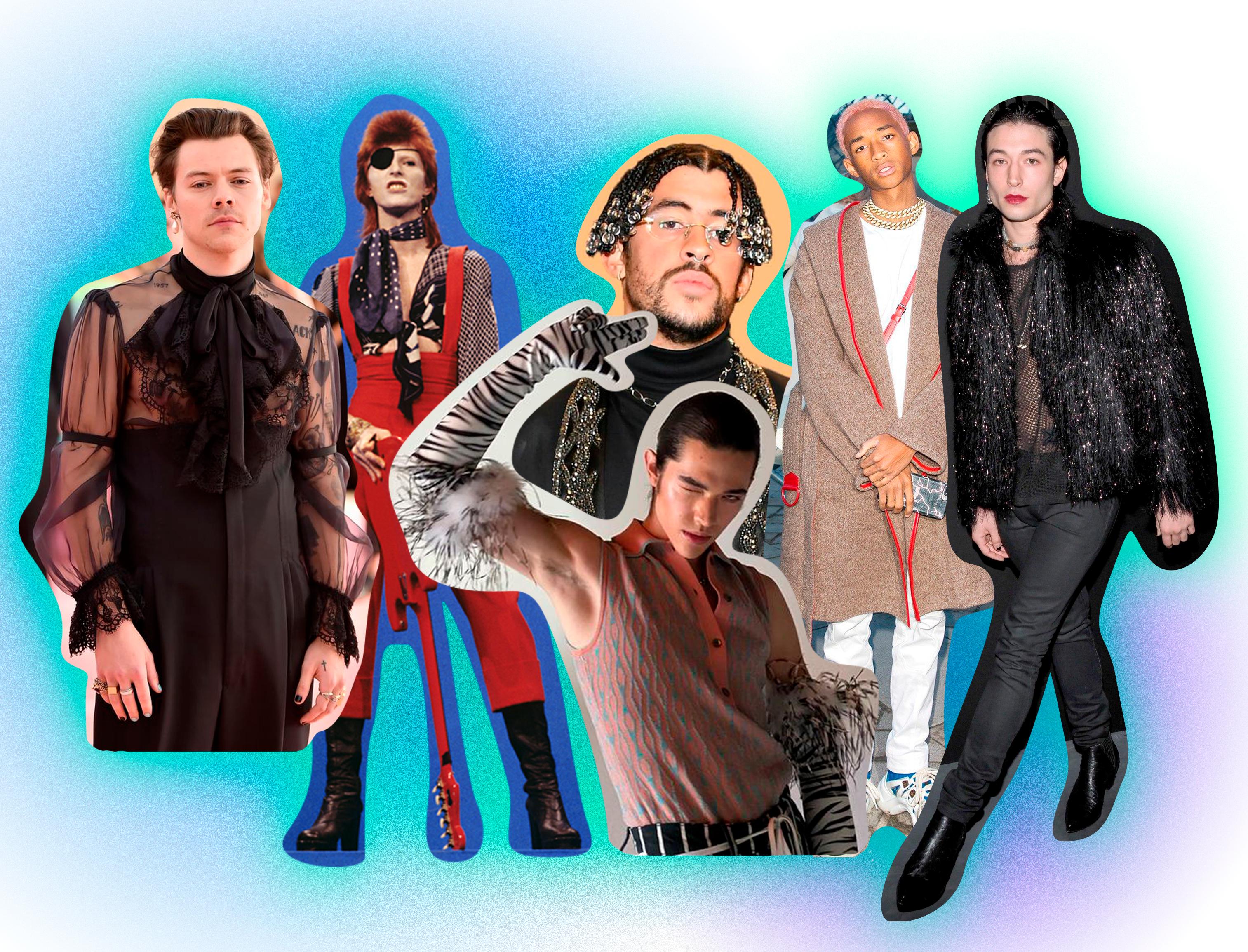Why I’m critical of Harry Styles’ fashion
At 27-years-old, British singer Harry Styles is already a universally recognized fashion icon. In his post-One Direction career, he adopted a more flamboyant and fashion-forward dress, wearing pink suits, pearls, sheer tops, dangly earrings, nail polish, and high heel boots. He’s earned significant praise for breaking away from the strict (and boring) confines of traditionally masculine clothing. The culmination of Styles’ rejection of toxic masculinity through fashion was in December 2020 when he became the first man to grace the cover of Vogue solo — wearing a Gucci gown.
Others have already pointed out that he isn’t exactly a pioneer; his fashion is inspired by musicians David Bowie and Prince, who were also known for “gender bending” fashion before he was even born. This trio’s fashion isn’t exactly unique or revolutionary either, however. These three are just those who have been uplifted by the industry, and our culture, because they have been deemed more palatable.
Bowie was white, and although Prince was a Black man, for part of his career he was presented as multiracial due to his lighter skin tone, and his role as a biracial musician in Purple Rain. Bowie and Prince flirted with rumours about their sexuality, with Bowie even stating that he was gay and bisexual in the 70s, but both were ultimately presumably straight, as Bowie later said he was “always a closet heterosexual,” while Prince became quite conservative.
Despite this, Prince and David Bowie are widely considered to be gay icons. In contrast, Little Richard, a rock ‘n’ roll pioneer remembered for his “fervent shrieks, flamboyant garb, and joyful, gender-bending persona” who inspired Prince and Bowie musically and stylistically, has not been afforded the same status even though he referred to himself as gay and omnisexual throughout his life. Sylvester, an androgynous and openly gay singer best known for his 1978 disco hit (and LGBTQ+ pride anthem) “You Make Me Feel (Mighty Real)” has also been largely forgotten in this discourse.
Styles has kept his sexuality ambiguous. And while I respect his desire to keep certain details private, there is a long history of bisexuality being used by musicians to seem more interesting and transgressive which has ultimately contributed to stigma that continues to surround bisexuality. He’s denied “sprinkling in nuggets of sexual ambiguity to try and be more interesting,” but I’m admittedly a little weary. Even if Styles is queer, right now, his sexual orientation is ambiguous and he’s only ever publicly dated women. This allows him to benefit from queer aesthetics and allows queer people to identify with him, without Styles having to deal with nearly as much homophobia as other entertainers like Lil Nas X or Billy Porter, who also sport very feminine and androgynous fashion on red carpets and are both openly gay men.
Styles’ rise as both a fashion and queer icon shows how, despite more representation and diversity in our media, we haven’t made much progress since the heydays of Bowie and Prince.
Actor and singer Jaden Smith was featured in a womenswear campaign for Louis Vuitton at age 17, wearing a skirt. This made him the first man to model women’s wear for the fashion house. Smith has been wearing outfits similar to Styles for years, once wearing a skirt to his prom and even launching a gender neutral clothing line. But as one Twitter user pointed out in response to someone commenting on Styles’ impact on the fashion industry, “its the way jaden smith has been wearing the outfits harry styles has, but yall called him weird and made fun of him.”
Fashion similar to Styles’ is common among male K-pop idols, who are frequently criticized for “looking like girls” in the West. G-Dragon, a 32-year-old South Korean rapper and the leader of hip hop group Big Bang, has been called “a chameleon who often makes peak-era Lady Gaga seem staid.” Though, for much of his career, G-Dragon has dressed quite traditionally masculine (albeit much more fun and fashionable then the average male celebrity), he’s also been unafraid to wear makeup, heels, skirts, and drop earrings, or sport long hair and look beautiful. He’s gone way beyond anything Styles has ever done in terms of gender-fluid fashion, but in his more toned down moments he’s dressed very similarly to Styles.
Despite this, male K-Pop idols like G-Dragon are not considered queer or fashion icons, and neither is Jaden Smith. While there are other factors besides race or xenophobia at play, it would be irresponsible to totally ignore that.
When it comes to male celebrities — whether we’re talking about Styles, Prince, or Smith — feminine, androgynous, flamboyant fashion is usually exotica. Rarely do they actually dress that way off stage or off the red carpet or magazines. When they dress outside traditional gender roles they do deal with criticism, but they also get attention and praise while regular queer people who dress like that are at risk of violence when they walk down the street. So when our culture puts men like Styles on pedestals, it feels like a way for society to pat itself on the back as super progressive while ignoring the struggles of the LGBTQ+ community, particularly queer POC.
I think Styles is helping to make fashion less binary and showing a different type of masculinity, and I’m happy he’s dressing however he likes. But that doesn’t mean we shouldn’t be critical and have an intersectional perspective that helps us realize why his fashion is so hyped up. There is a long history of queer and Black culture being appropriated by privileged white cishet people who are celebrated for these aesthetics. And queer people are often so desperate for representation that they will idolize the crumbs they’re given even when it’s obvious queerbaiting.
So the solution seems simple: you can love and appreciate Styles’ fashion, but make sure you’re uplifting the true pioneers.
Photo collage by Kit Mergaert




